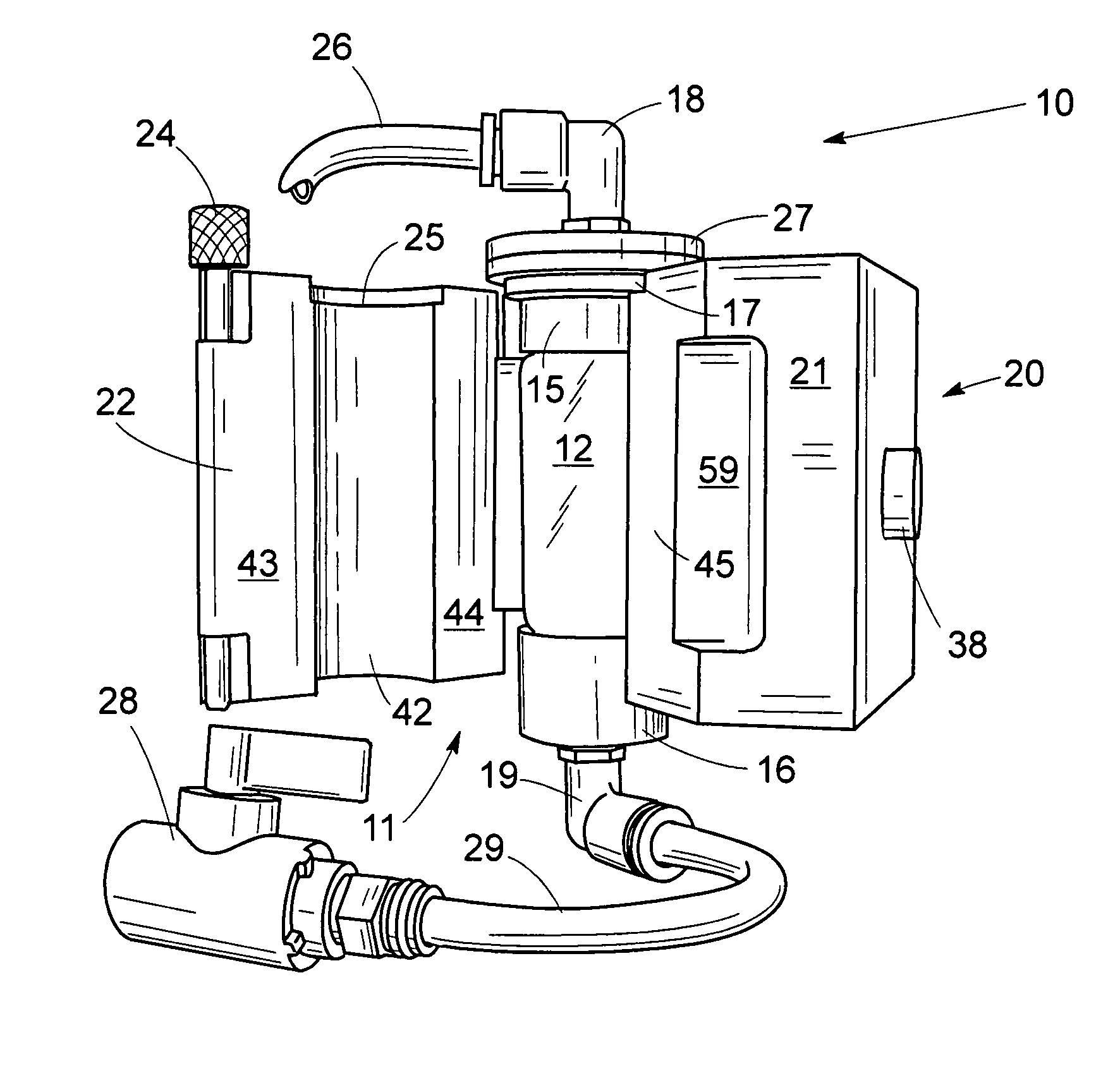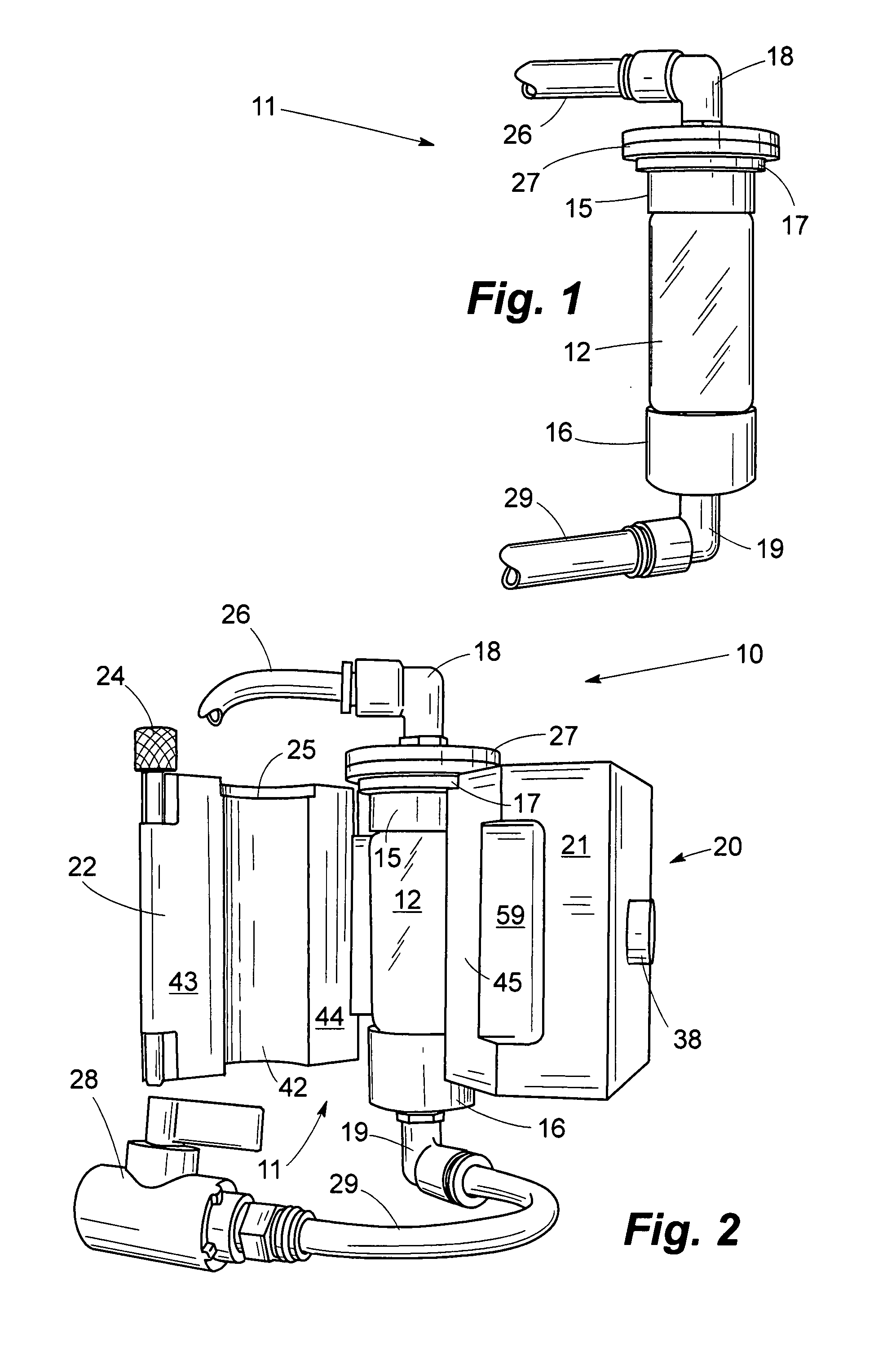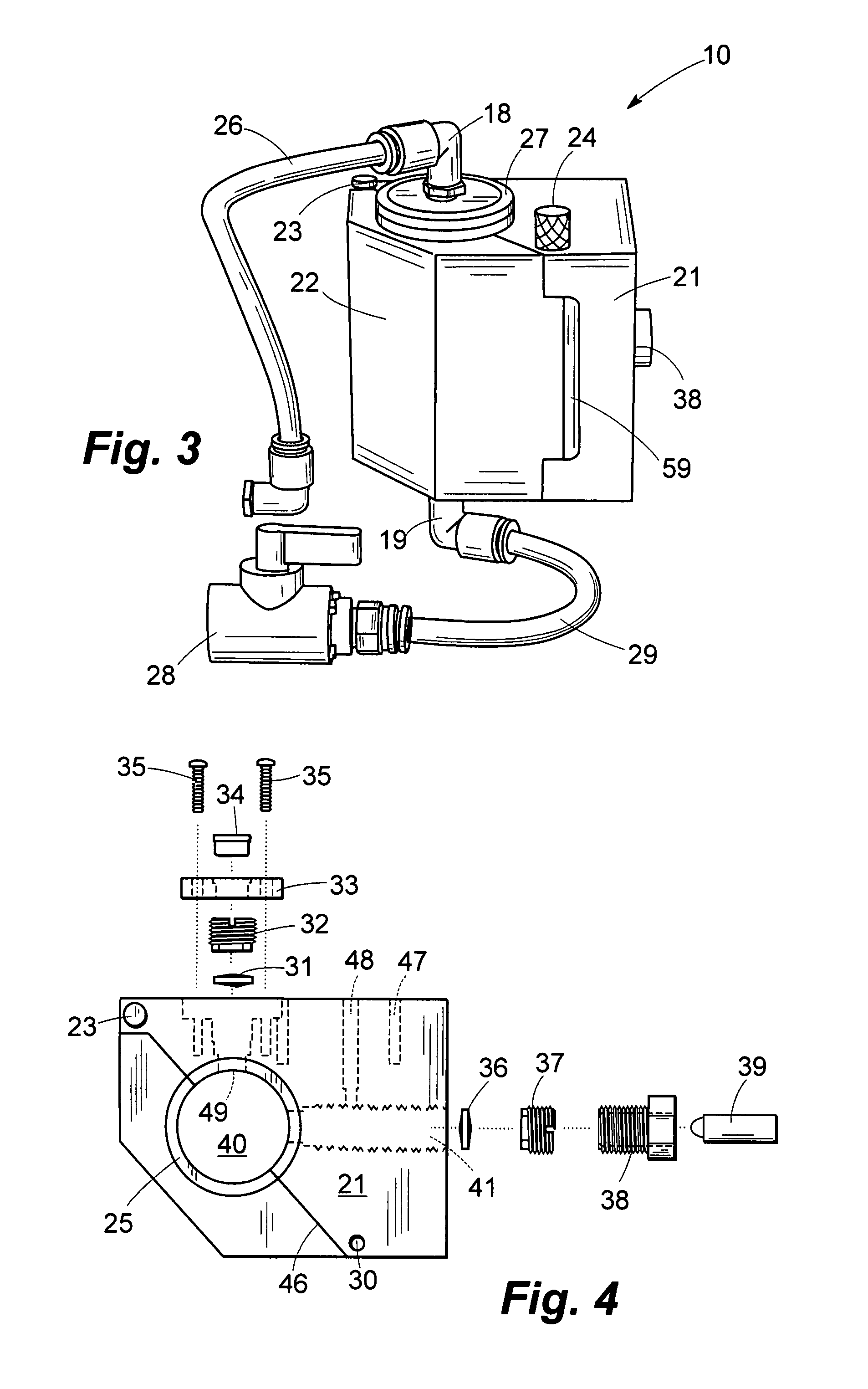Turbidimeter improvements
a technology of turbidity measurement and turbidity, applied in the field of turbidimeters, can solve the problems of erroneous turbidity readings, large quantities of very costly reagents used in each initial and subsequent primary calibration, and large quantities of very costly reagents, so as to reduce the consumption of costly reagents
- Summary
- Abstract
- Description
- Claims
- Application Information
AI Technical Summary
Benefits of technology
Problems solved by technology
Method used
Image
Examples
Embodiment Construction
[0024]In the drawings, a novel flow-through sample cell apparatus is indicated generally by the reference numeral 10. The apparatus 10 includes a sensor block 20 having two major components: a movable first element 22 and a stationary second element 21 which are hingedly connected together by a vertically-aligned hinge pin 23. As it is being pivoted about the pin 23, the first element 22 swings open like a door (FIG. 2).
[0025]Also included in the apparatus 10 is a flow-through sample cell 11 having a cuvette with a transparent midsection 12 and end portions 13, 14 which are formed as a single, unitary piece with the midsection. Threadedly engageable with external threads on the end portions 13, 14 are opaque caps 15, 16 which form water-tight seals with them. Protruding from the top edge of the upper cap 15 is a cap plate 27; and beneath it, is disposed a support shoulder 17 over which the cap plate is cantilevered.
[0026]In the preferred embodiment, the lower cap 16 and that portion...
PUM
| Property | Measurement | Unit |
|---|---|---|
| angle | aaaaa | aaaaa |
| volume | aaaaa | aaaaa |
| turbidity | aaaaa | aaaaa |
Abstract
Description
Claims
Application Information
 Login to View More
Login to View More - R&D
- Intellectual Property
- Life Sciences
- Materials
- Tech Scout
- Unparalleled Data Quality
- Higher Quality Content
- 60% Fewer Hallucinations
Browse by: Latest US Patents, China's latest patents, Technical Efficacy Thesaurus, Application Domain, Technology Topic, Popular Technical Reports.
© 2025 PatSnap. All rights reserved.Legal|Privacy policy|Modern Slavery Act Transparency Statement|Sitemap|About US| Contact US: help@patsnap.com



